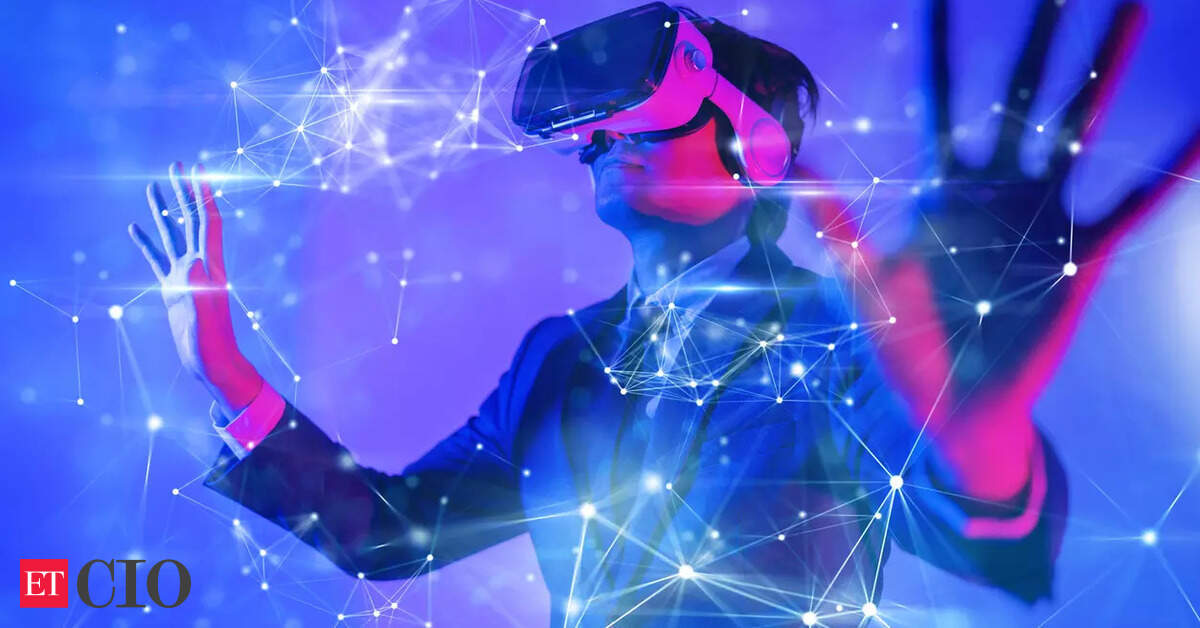Metavers, from storybooks to our living rooms, CIO News, ET CIO

Speaking of what science will create tomorrow in its true fictional form, we are now witnessing the emergence of the metaverse. In 1992, Neal Stephenson coined the term “Metaverse” in his novel Snow Crash, with the idea that people in the future would create a virtual world similar to the real world, using computers. 30 years later, this futuristic idea is now knocking on our doors as a reality. We can call the metaverse the new internet, or a new way of life for people to interact, do business, and be more democratic in the virtual society. But what is the metaverse? It is essentially described as a group of interconnected 3D virtual worlds that allow people to connect in real time and form user-owned Internet economies that diminish the boundaries between physical and simulated realms.
The Metaverse is still emerging, and many of its key components have begun to take shape to further revolutionize industries such as e-commerce, media and entertainment, and real estate. This implies that many companies have started to look to the metaverse and have a presence where people can interact with each other in a virtual world. As the internet is rapidly changing, these companies are also moving forward to stay competitive.
But it’s more than a new mode of interaction, the metaverse is big business.
According to a report by Market Research Future (MRFR), the metaverse market is worth $21.91 billion and will grow at 41.7% CAGR by 2030. If we are skeptical of the prediction number and percentage, we should examine what the internet has done for the industry and how the valuation of Facebook, WhatsApp and other social media apps has grown over the years.
The metaverse is powered by DARQ technologies that have all been out of the labs for many years now. However, Covid-19 happened, and mass adoption accelerated the integration of technology as anything. Many companies have started to invest in the technology stack, which has resulted in increased use by people and mass productions reducing hardware costs. The pandemic has rebooted the world, where working from home has become the new normal and virtual meetings have taken over travel. People are more connected than ever with video conferencing/calling, messaging and team chat apps. It’s Round 1 of the metaverse war already won!
However, the Metaverse aims to go further. It includes tools such as:
- Augmented Reality (AR), which is a technology that allows anyone to see additional digital information superimposed on the physical world. This can be used for entertainment, like in video games, or for practical purposes, like assembling a piece of furniture.
- Virtual Reality (VR), where you can be anyone or anything. You can visit any place that exists or not and do whatever you want. In augmented reality, you’re still in the real world, but you can see things that aren’t there.
- Mixed reality (MR), also known as hybrid reality, is a technology that brings together real and virtual world experiences. This is an advanced level of augmented reality, where the technology can recognize your surroundings using depth sensors.
- Extended Reality (XR), which describes a range of technologies that allow users to interact with digital information in physical space. It creates simulations or digital environments for users, and can be used for educational training, or to set up new modes of entertainment.
Metaverse Realms
There are three of these realms that seem the most interesting:
- MetaSpaces: This will allow people to create new types of gathering spaces through technology that will be different from traditional homes, events and vacations. These new spaces will include virtual places that go beyond video games and digital stages, as well as liminal spaces that intertwine with physical and virtual events. People will also buy and sell digital real estate, which is a new type of property. The technology also enables people to have immersive sensory experiences that bring them closer to a physical destination without actually being there.
- MetaBusiness: In the metaverse, there will be countless opportunities for brands, advertisers, retailers, and employers. This will include gamevertising, digital twin stores, meta-retail and meta-workspace. 76% of global users want video chats for more natural everyday interactions. Companies are now embracing the idea of employees working from anywhere, and startups are using gaming mechanics to create virtual workplaces that foster collaboration and creativity.
- Metasocieties: The Internet is transforming the way people interact and form communities, based on shared values and interests. In the near future, the metaverse will allow people to create and join metasocieties similar to our physical world and sharing common interests and beliefs.
So is this Nirvana?
Still far from it. Many psychologists point to the pitfall of dopamine overdose. If Facebook and Twitter released these hormones and gave a fake high and a huge low, imagine the metaverse adding octane to the mix. This could further disconnect people from the surrounding reality and may have unsolicited results. Another concern is cybersecurity and what that means with billions of people moving through the metaverse without the necessary safeguards. There will be checks and balances, but more checks are imperative to create the balance – is our technology mature enough to do this? The metaverse offers us a chance to create a world that is inclusive, ethical, and based on meaningful connections. It’s magic in our hands – we can either use it to have a dream ride or allow it to become our worst nightmare!
The author is Senior Vice President, Strategy & Technology APAC, GlobalLogic





